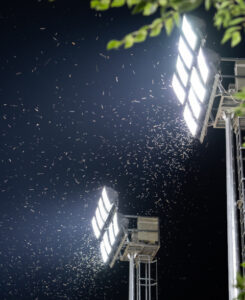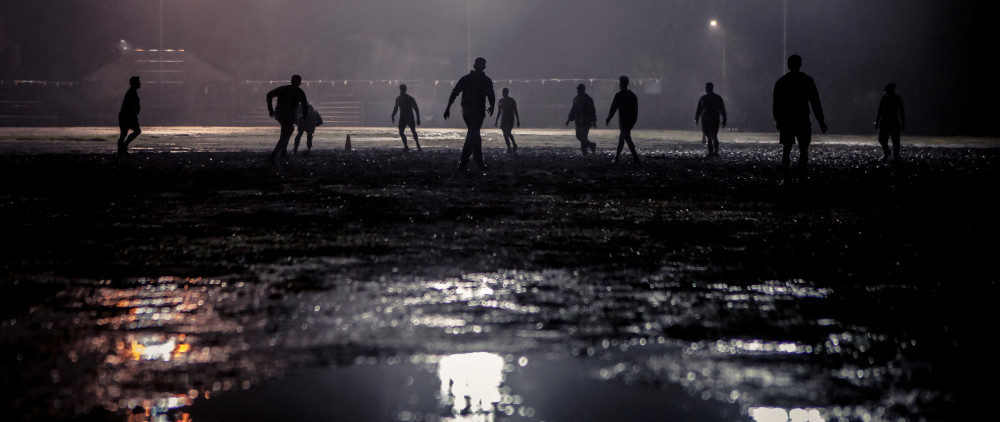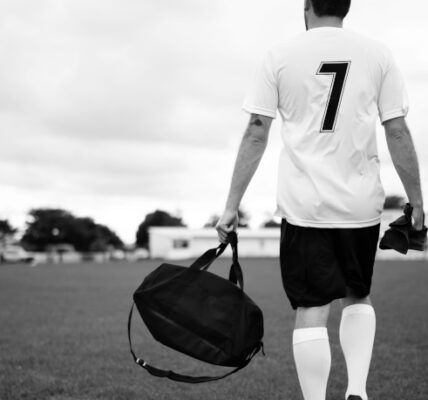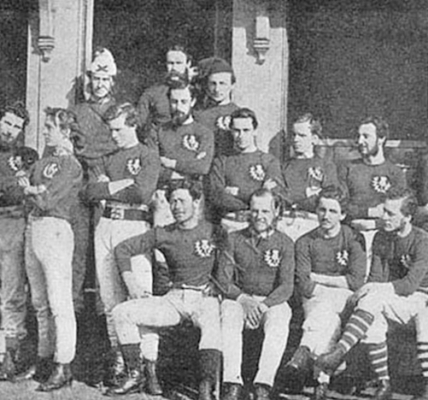There’s wet, and then there’s KZN wet. The kind of rain that doesn’t fall, it arrives. It smacks the pitch like a baptism. It warps strategy, floods playbooks, and leaves boots three kilos heavier. And yet, in KwaZulu-Natal, rugby doesn’t stop when the heavens open. If anything, it becomes something else entirely. Wetter. Wilder. Weirder. Welcome to monsoon madness.
Picture this, a Kings Park stadium soaked to its bones. Clouds sag like bruises over Durban’s skyline. The anthems echo, warbled by wind. Players stomp puddles on the touchline like they’re auditioning for Swan Lake in steel studs. And yet, whistle blows, kickoff flies, and a mud-soaked war begins.
This is where rugby morphs into its own genre, a kind of gladiator opera performed in sleet and slush. Forget champagne rugby. This is punch-drunk puddle-ball, where knock-ons are inevitable, passes are prayers, and a line break looks like slow-motion slapstick.
For most teams, the rain is a curse. For KZN teams? It’s heritage. This province has a strange relationship with the sky. Rain here is never just weather, it’s memory. Ask anyone who’s played school rugby in Durban or Pietermaritzburg and they’ll tell you, the toughest matches weren’t always the fiercest opponents. They were the ones where the pitch turned to soup and the ball to a bar of soap.
And it’s not just amateur myth. There are legendary games still whispered about in changerooms. The 1998 rain match between the Sharks and the Bulls, when the scrum collapsed into a slip-and-slide. Or the 2009 fixture where Kings Park needed emergency pumping at halftime. Or that high school final in 2017 when both teams gave up kicking because the ball kept vanishing into waterlogged grass.
But here’s the thing, KZN teams adapt. They always have. Because to play here is to learn the storm. You learn how to run without traction. You learn how to pass low and fast before the water drags the ball down. You learn to slide, really slide, because a tackle in the monsoon can carry you five metres and your dignity with it. You learn not to complain. You learn to breathe through it. To play with the rain, not against it.
Coaches even drill for it now. Some of the province’s top rugby academies have rain-specific training modules. Wet ball handling. Mud scrumming. Waterproof comms. Because they know, rain isn’t a surprise in KZN. It’s a variable. Like altitude in Joburg or wind in Cape Town. You don’t dodge it. You train for it.
 And maybe that’s why some of the grittiest players this country’s ever seen came from this soil. It’s not a coincidence that KZN forwards have a reputation for grind. For that shoulder-down, trench-style play. Rain rugby teaches you that. You don’t dance in the drizzle, you dig in. You don’t chase glory, you chase the next metre. It’s not elegant, but it’s real. It’s honest. It’s soaked to the socks in effort.
And maybe that’s why some of the grittiest players this country’s ever seen came from this soil. It’s not a coincidence that KZN forwards have a reputation for grind. For that shoulder-down, trench-style play. Rain rugby teaches you that. You don’t dance in the drizzle, you dig in. You don’t chase glory, you chase the next metre. It’s not elegant, but it’s real. It’s honest. It’s soaked to the socks in effort.
Only in Durban would supporters bring ponchos, cooler boxes, and unshakable optimism to a fixture with a 90% chance of a downpour. They sit, soaked and screaming, as their team splashes forward. They cheer for drop goals that never lift off the ground. They chant through thunder and lightning warnings like it’s all just part of the soundtrack.
There’s a peculiar kind of pride in it. A badge of honour in saying “we were there, that night, that storm, that try in the downpour.” It becomes folklore. The kind of story you tell your kids, not about the final score, but about the waterfall that burst through the stadium stairwell. About the winger who lost his boot mid-run. About the puddle that swallowed the ball for eight full seconds.
And while the rest of the country might scoff, “just cancel it,” they say, KZN rugby culture says, play on. Because there’s something sacred in enduring the storm. In many ways, monsoon matches feel like a metaphor for South African rugby itself. It’s never been easy. Never been clean or fair or dry. It’s always been messy. Unpredictable. Bruising. But we still run out there. We still bind and break and push and believe.
Maybe that’s why these rainy games stick with us. Not just because they’re dramatic. But because they remind us of what rugby really is beneath all the branding, a group of people trying to hold on, to the ball, to each other, to something that matters, even when the sky’s falling.
So next time you see a fixture scheduled in Durban with clouds on the radar, don’t groan. Don’t check the weather app. Get your gumboots. Wrap your jersey in plastic. Bring a flask, maybe. And prepare for something unforgettable. Because in KwaZulu-Natal, when it rains, it pours history, it pours culture, it pours rugby. And every drop tells a story.




